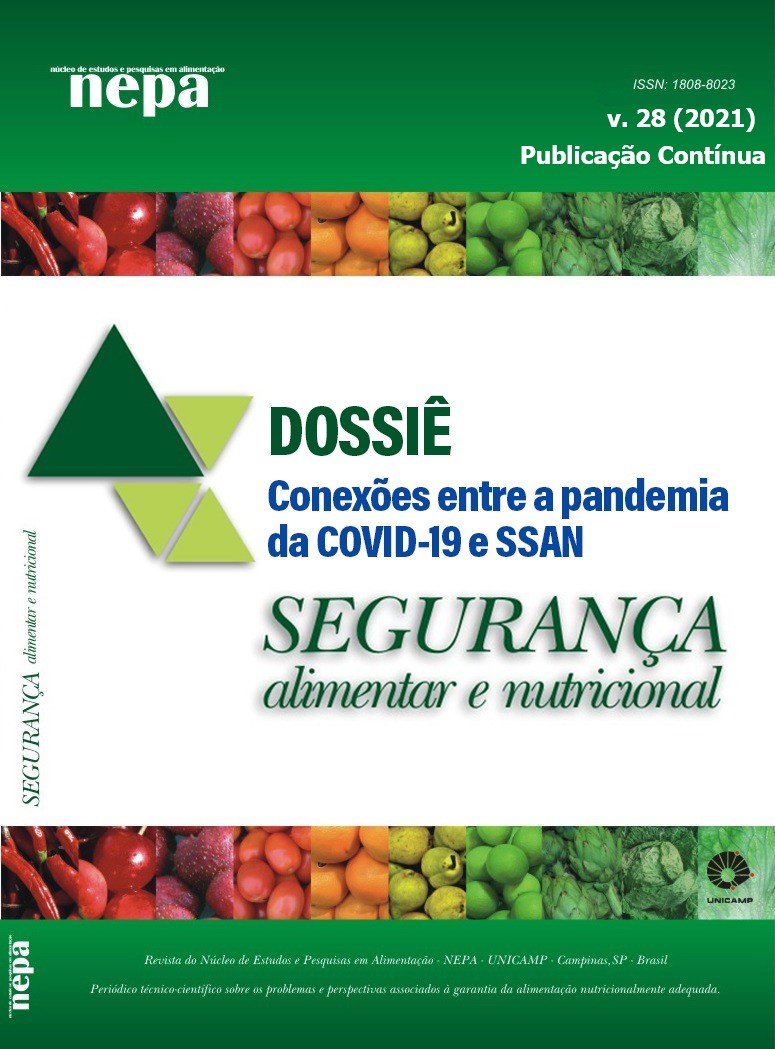Abstract
Consumption of ultra-processed foods can be especially harmful in childhood, as children are considered more vulnerable to the effects of food additives, which have had an acceptable daily intake (ADI) established for adults. The objective was to evaluate, according to the information on the labels, the types of food additives present in foods targeted at children. It is a cross-sectional, descriptive study which compiled the types of additives in the ingredient list of eight categories (fruit drink, dairy drinks, sandwich cookies, cakes, breakfast cereals, jellies, corn chips, and yogurts) of products with child appeal (n = 409) collected in supermarkets in Belo Horizonte-MG, in the second half of 2018. Only 19 (4.6%) products had no additives. The cakes (8,3 ± 2.1) and gelatins (8,3 ± 1.2) categories presented the highest average of additives and the morning cereals category, the lowest (2,0 ± 1.6). The most commonly found food additives were: flavoring (79%; n = 323), colorings (56%; n = 229) and emulsifiers (36%; n = 148). It was mainly found the classes of flavorings, colorings and emulsifiers.
References
Monteiro CA, Moubarac JC, Cannon G, Ng SW, Popkin B. Ultra-processed products are becoming dominant in the global food system. Obes Rev. 2013;14(S2):21–8.
Monteiro CA, Laura M. diet quality, and health using the NOVA classification system Prepared by. 2019.
Codex Alimentarius, FAO (Organización de las Naciones Unidas para la Alimentación y la Agricultura), OMS (Organización Mundial de la Salud). Norma General del Codex para los Aditivos Alimentarios. 2018;507. Available from: http://www.fao.org/gsfaonline/docs/CXS_192s.pdf
BRASIL. Guia alimentar para a população brasileira. Ministério da Saúde. 2014. 158 p.
Rodrigues VM, Rayner M, Fernandes AC, De Oliveira RC, Da Costa Proença RP, Fiates GMR. Comparison of the nutritional content of products, with and without nutrient claims, targeted at children in Brazil. Br J Nutr. 2016;115(11):2047–56.
Hinnig P de F, Bergamaschi DP. Itens alimentares no consumo alimentar de crianças de 7 a 10 anos. Rev Bras Epidemiol [Internet]. 2012;15(2):324–34. Available from: http://www.scielo.br/scielo.php?script=sci_arttext&pid=S1415-790X2012000200010&lng=pt&tlng=pt
FERREIRA F de S. Aditivos Alimentares E Suas Reações Adversas No Consumo Infantil. Rev Da Univ Val Do Rio Verde [Internet]. 2015;397–407. Available from: http://periodicos.unincor.br/index.php/revistaunincor/article/view/1845
Ferreira JSG, Silva Y Da, Moraes OMG de, Tancredi RP. Marketing de alimentos industrializados destinados ao público infantil na perspectiva da rotulagem. Vigilância Sanitária em Debate. 2015;0(0):75–84.
Lima M, Ares G, Deliza R. How do front of pack nutrition labels affect healthfulness perception of foods targeted at children? Insights from Brazilian children and parents. Food Qual Prefer. 2018;64:111–9.
Polônio MLT, Peres F. Consumo De Corantes Artificiais Por Pré-Escolares De Um Município Da Baixada Fluminense, Rj Consumo. 2012;4(1):2748–57.
MAPA. Resolução RDC no 5, de 15 de janeiro de 2007. Ministério da Agric Pecuária e Abast. 2007;2007:ANEXO.
King S, King H. Brasil. Resolução - CNNPA no 38 de 1977. 1977;7. 1977;(1):541–59.
Albuquerque MV, dos Santos SA, Cerqueira N, da Silva JA. Educação Alimentar: Uma Proposta de Redução do Consumo de Aditivos Alimentares. Soc Bras Química [Internet]. 2012;34(02):51–7. Available from: http://qnint.sbq.org.br/qni/visualizarTema.php?idTema=59
Bissacotti AP, Angst CA, Saccol AL de F. Implicações dos aditivos químicos na saúde do consumidor. Ciências da Saúde, St Maria [Internet]. 2015;16(1):43–59. Available from: https://www.periodicos.unifra.br/index.php/disciplinarumS/article/viewFile/1108/1050
Instituto Brasileiro de Geografia e Estatística IBGE. Pesquisa Nacional de Saúde do Escolar: 2015 / IBGE, Coordenação de População e Indicadores Sociais. 2016. 132 p.
Effects of long-term administration of aspartame on biochemical indices lipid profile and redox status of cellular system of male rats.
Sasaki YF, Kawaguchi S, Kamaya A, Ohshita M, Kabasawa K, Iwama K, et al. The comet assay with 8 mouse organs: Results with 39 currently used food additives. Mutat Res - Genet Toxicol Environ Mutagen. 2002;519(1–2):103–19.
Schnabel L, Kesse-Guyot E, Allès B, Touvier M, Srour B, Hercberg S, et al. Association between Ultraprocessed Food Consumption and Risk of Mortality among Middle-aged Adults in France. JAMA Intern Med. 2019;179(4):490–8.
Polônio MLT, Peres F. Consumo de aditivos alimentares e efeitos à saúde: desafios para a saúde pública brasileira. Cad Saude Publica [Internet]. 2009;25(8):1653–66. Available from: http://www.scielo.br/scielo.php?script=sci_arttext&pid=S0102-311X2009000800002&lng=pt&tlng=pt

This work is licensed under a Creative Commons Attribution-NonCommercial 4.0 International License.
Copyright (c) 2021 Segurança Alimentar e Nutricional


